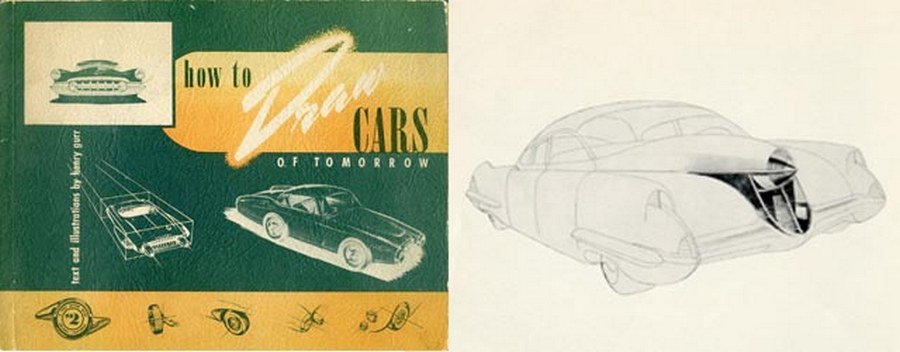
——————–
“Some of the facts revealed here may shock the reader….” How To Draw Cars of Tomorrow (1952)
That’s what’s written on the back cover of Bob Gurr’s 1952 book on car design, and it gives the book a sense of mystery and intrigue designed to captivate the potential reader – and as one of the first books on car design available to a hungry young American public in the early ’50s – that was an easy task to do.
This is the second in a series of articles focusing on Bob Gurr’s 1952 book, “How To Draw Cars of Tomorrow.” Click here to review all articles in this series.
——————
Hi Gang…
In Part 1 of the story, we reviewed what Gurr had to say about “design” in the “Foreword” of his book. Let’s review how what Dan Post and Bob Gurr had to say on the back cover – the part designed to “sell” young men on the importance and purchase of this book back in the early ’50s.
How To Draw Cars of Tomorrow
Text And Principal Illustrations By Henry Gurr
Here are the rudiments of automobile drawing in plain crisp language, with an unequalled selection of supporting sketches and renderings. This is the book that will turn armchair auto doodlers into artists of professional stature, and produce among the casually interested a pencil pushing effort showing mean ability.
The contents reveal the comprehensive character of the book: materials, getting started, character in existing cars, professional character in drawing, general perspective, ellipses, lighting (highlight, core, shadow, reflected light), reflections, chrome, distortion, what you can do as a designer, the trend of today, manufacturer’s point of view, critical dimensions, salon.
Besides the straight-forward course of instruction, the substantial Salon section of professional advance designs can also be considered a gold mine of fresh ideas for custom restyling current models.
Henry Gurr, a graduate of the Art Center School in Los Angeles, is now a professional motor car designer with one of the country’s largest companies. His rare combination of outstanding designing and rendering ability, coupled with engineering comprehension, assures his future as a resident of Southern Michigan.
Nowhere else between the covers of a book can such candid and unbiased views of manufacturer’s aims, designer’s problems, and consumer’s benefits be found. They would never have been said had the author been committed professionally when the book was written.
This is perhaps why some of the facts revealed here may shock the reader.
Dan Post Publication – Arcadia, California
In this second in a series on Bob Gurr’s book “How to Draw Cars of Tomorrow” (1952), we’ll review the next sections of his design book.
In Part 1 of this story, we covered:
- Foreword
- Materials
- Getting Started
- Character In Existing Cars
- Perspective
- Ellipses
Today, in Part 2 of this story, we’ll present the pages from the following sections:
- Professional Character in Drawing
- Lighting
- Reflections
- Chrome
- Distortion
- Critical Dimensions
- What You Can Do As a Designer
- The Trend of Today
- Manufacturer’s Point of View
The Critical Dimensions Section:
Pay close attention to the section below on “Critical Dimensions” which is shown on pages 30 and 31 of Gurr’s book.
Merrill Powell, car designer and co-owner of Victress Manufacturing from ’53 – ’61 really hammered home the importance of these 2 pages to me and their criticality to all designers building a car from scratch. Merrill also shared that these same dimensions apply to the building of a sports car using a Victress or any other fiberglass body in that these identify critical measurements in seating, height, and reach that must be adhered to so that the finished car has the right look, comfort, and safety.
Perhaps Merrill will comment additionally, below in this story and share some more thoughts on how these dimensions should be used by anyone building one of our favorite fiberglass fabrications. How ’bout it Merrill? Share some more thoughts with us? All comments are always appreciated 🙂
And now… let’s look at the next sections of Gurr’s book. Remember…..you can click on each picture below to make it appear larger on your screen.
Summary:
Thanks again to Bob Gurr for the time and energy he spent sharing with us his memories of his Art Center days and the lead up to the publication of his 1952 book “How To Draw Cars of Tomorrow.” I’ll be sharing the rest of this book over several more stories here at Forgotten Fiberglass.
And be sure to check out Bob Gurr’s forthcoming book, “Bob Gurr, Design: Just For Fun.” Click here to review the contents and consider purchase. I already reserved my copy 🙂 It’s guaranteed to be a fantastic read and a wonderful look inside the mind of a wildly talented designer.
And…for those of you interested in learning more about Bob Gurr, check out an excellent interview done by Collectible Automobile Magazine in October, 1998. It’s worth the read. Also, click here to review a recent post at the website “Imagineering Disney” to learn more about Bob Gurr and his work at Disney.
Hope you enjoyed the story, and until next time…
Glass on gang…
——————————————————————-
Click on the Images Below to View Larger Pictures
——————————————————————-
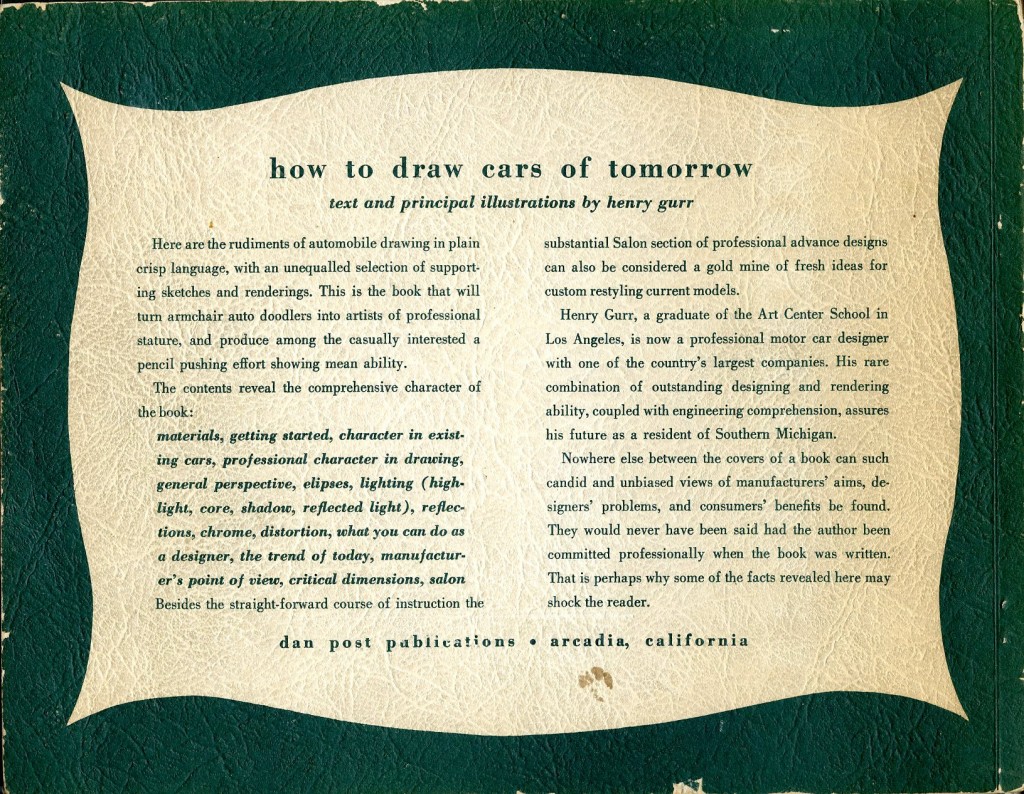
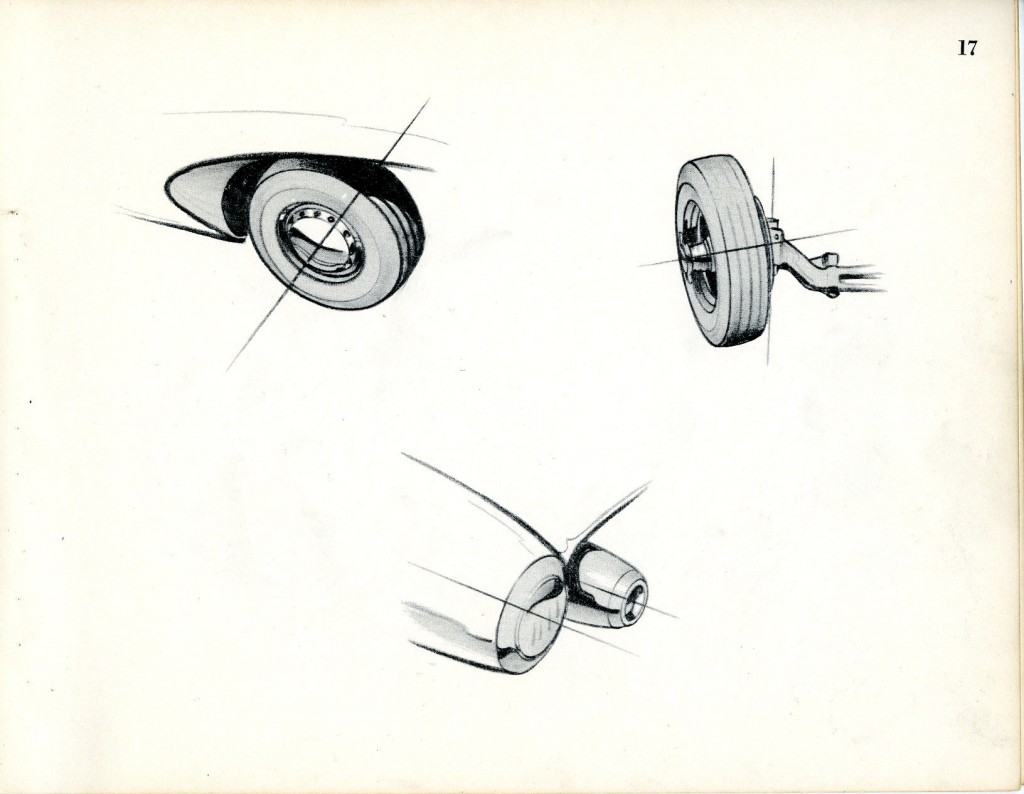
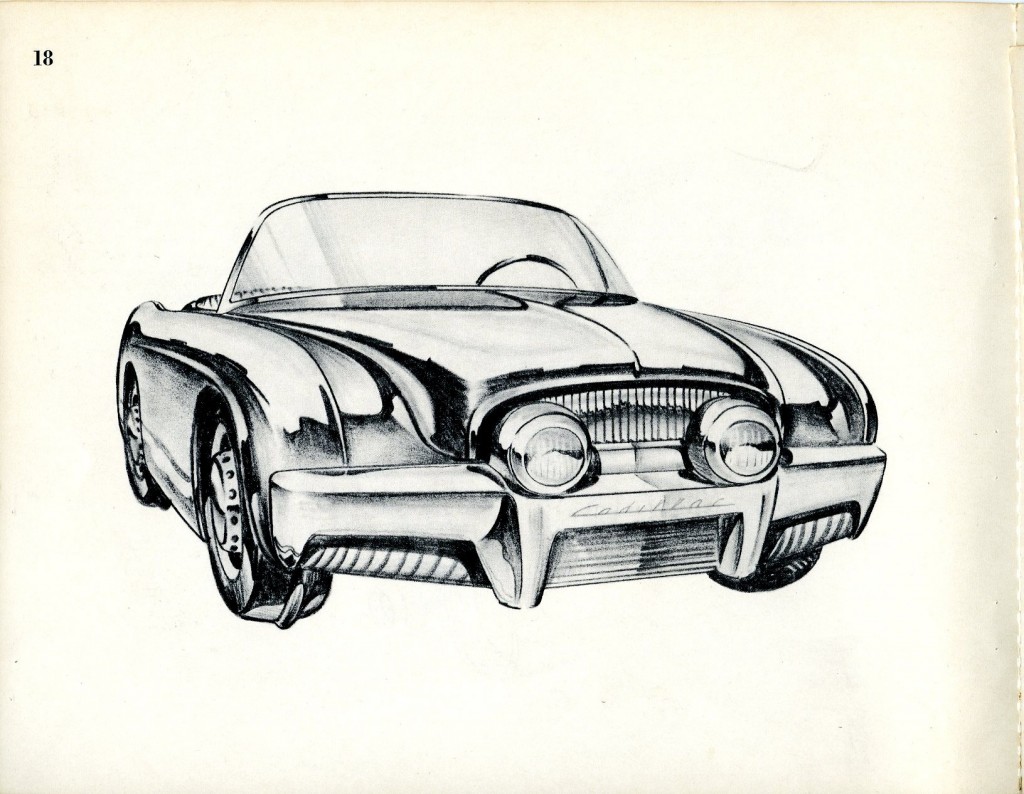
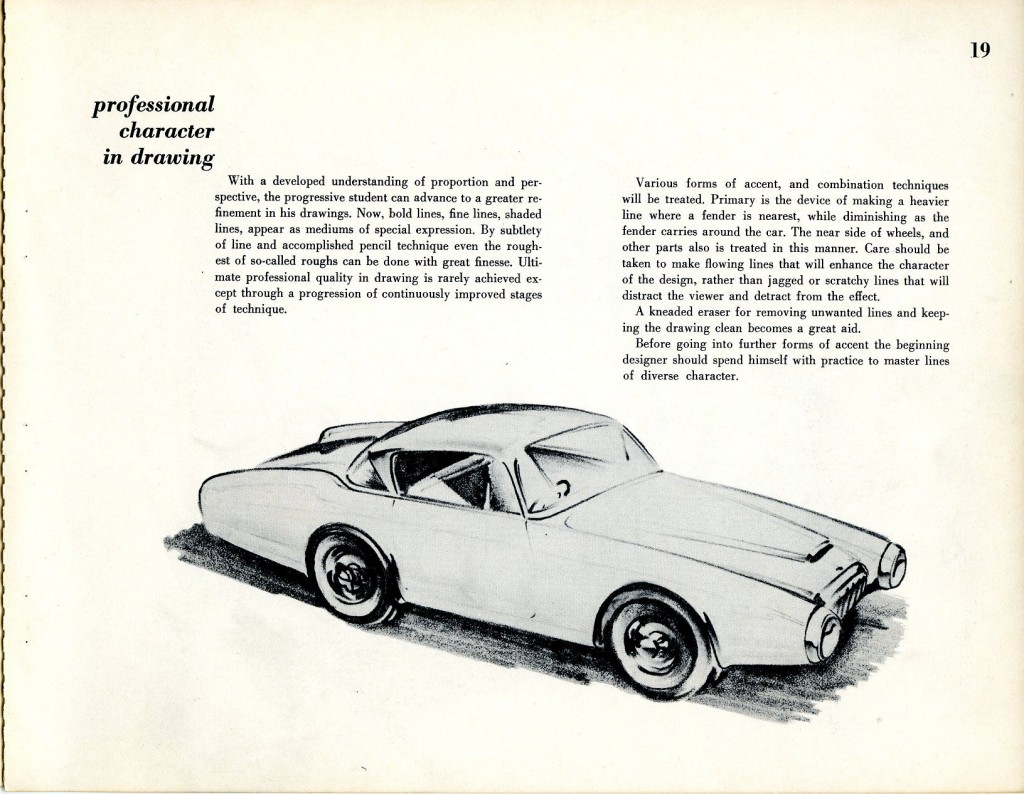
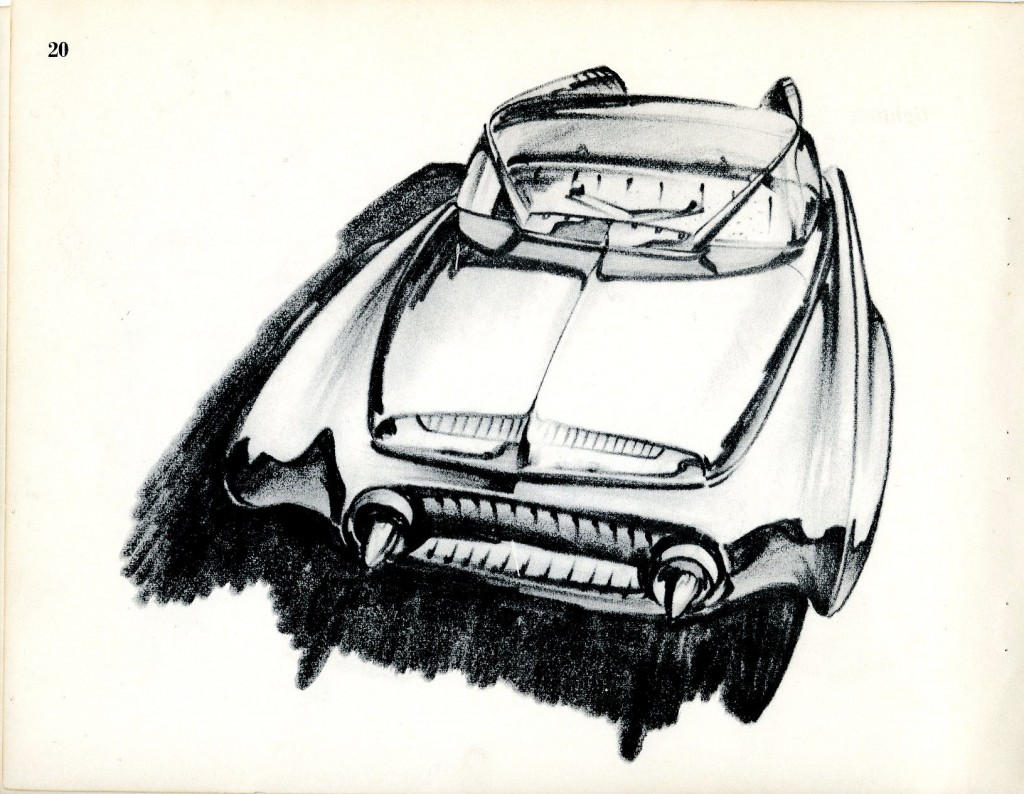
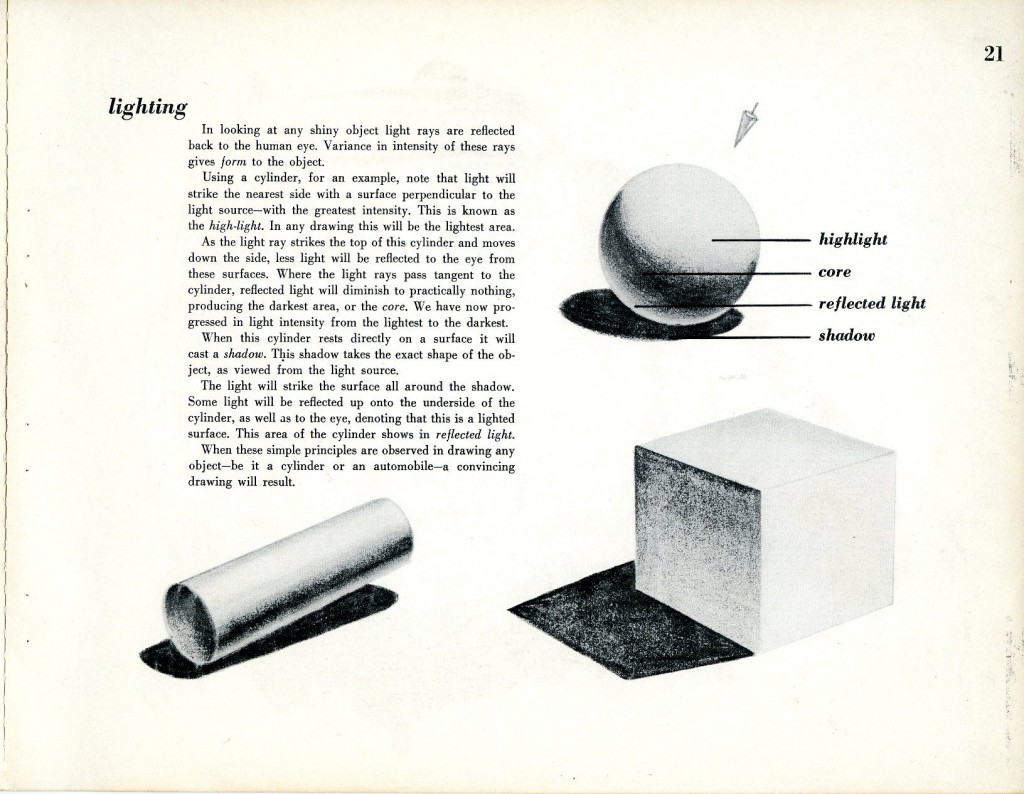
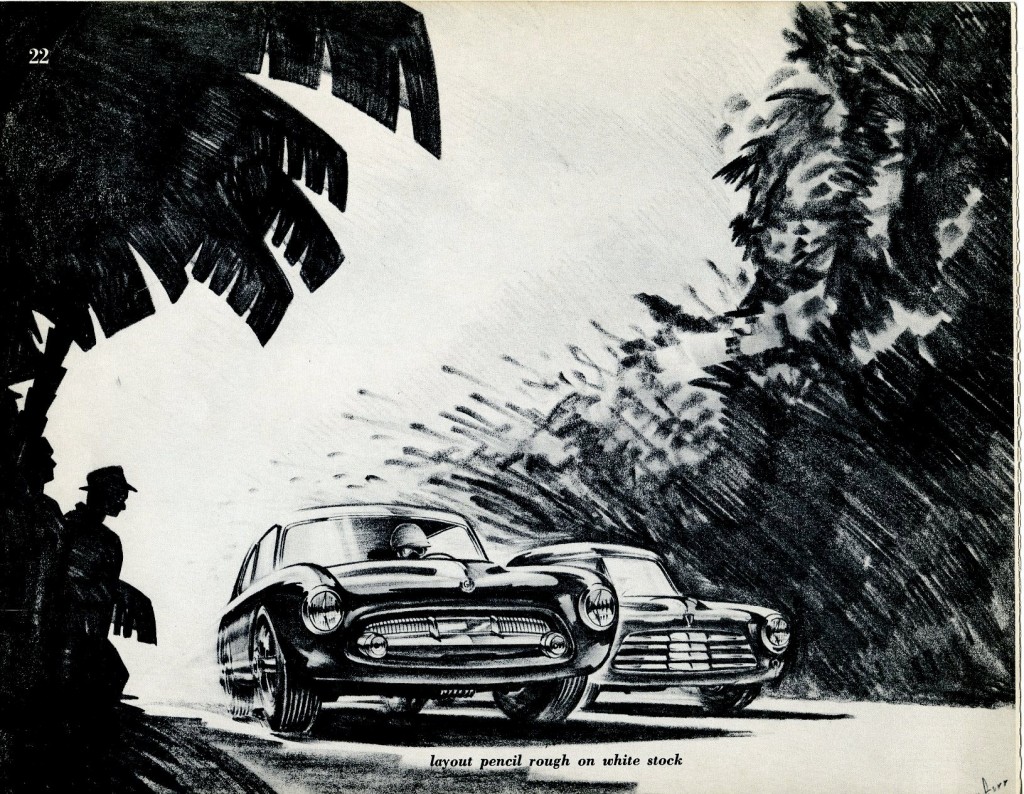
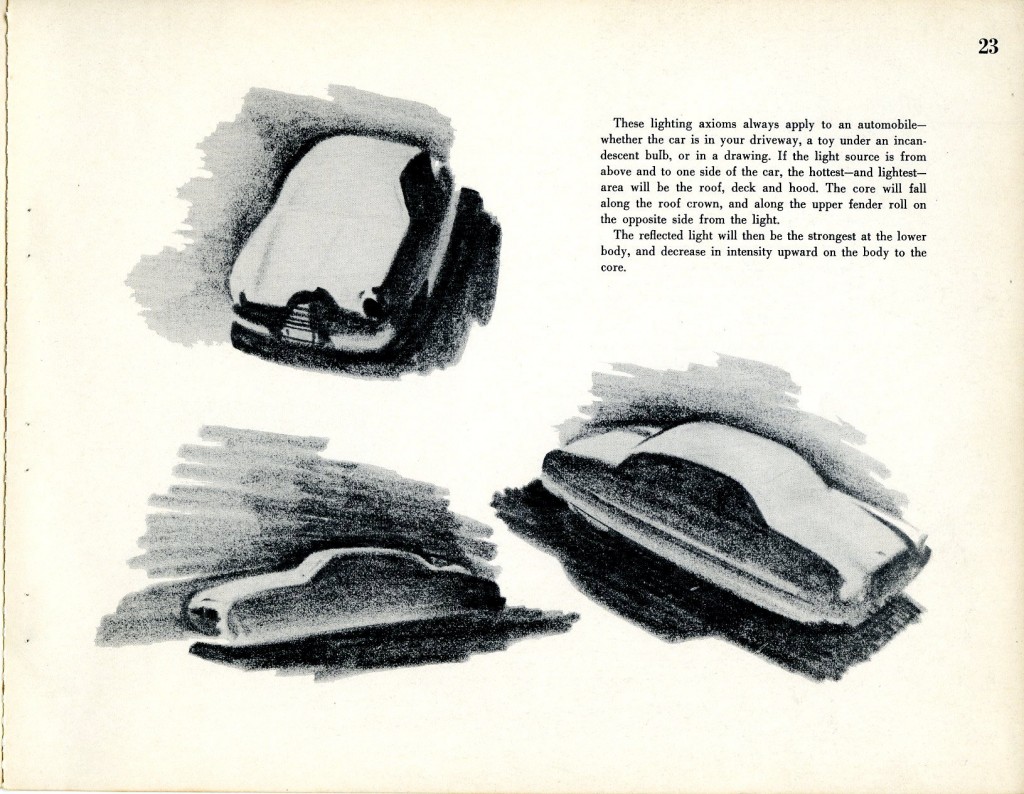
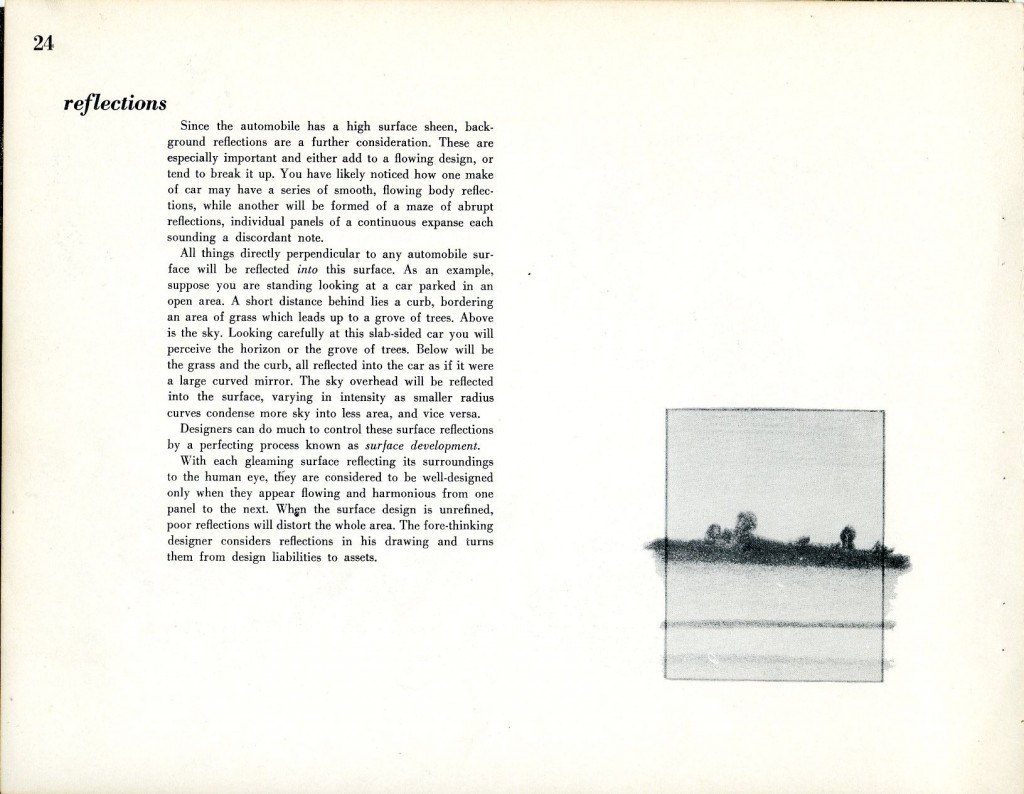
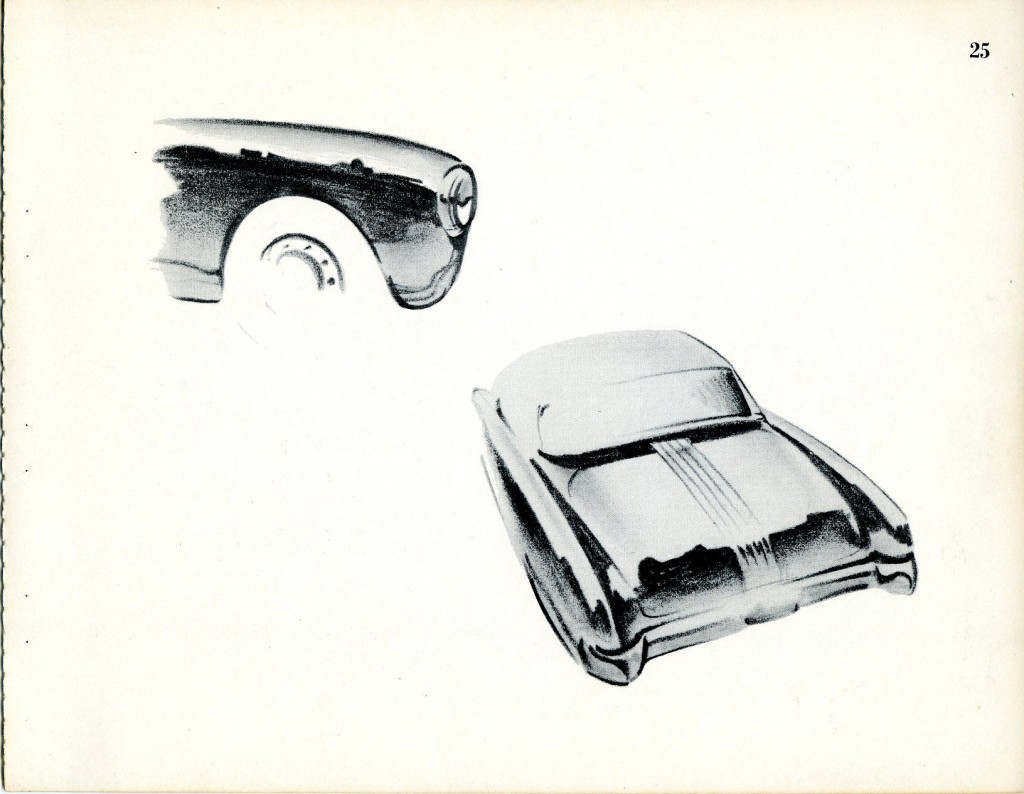

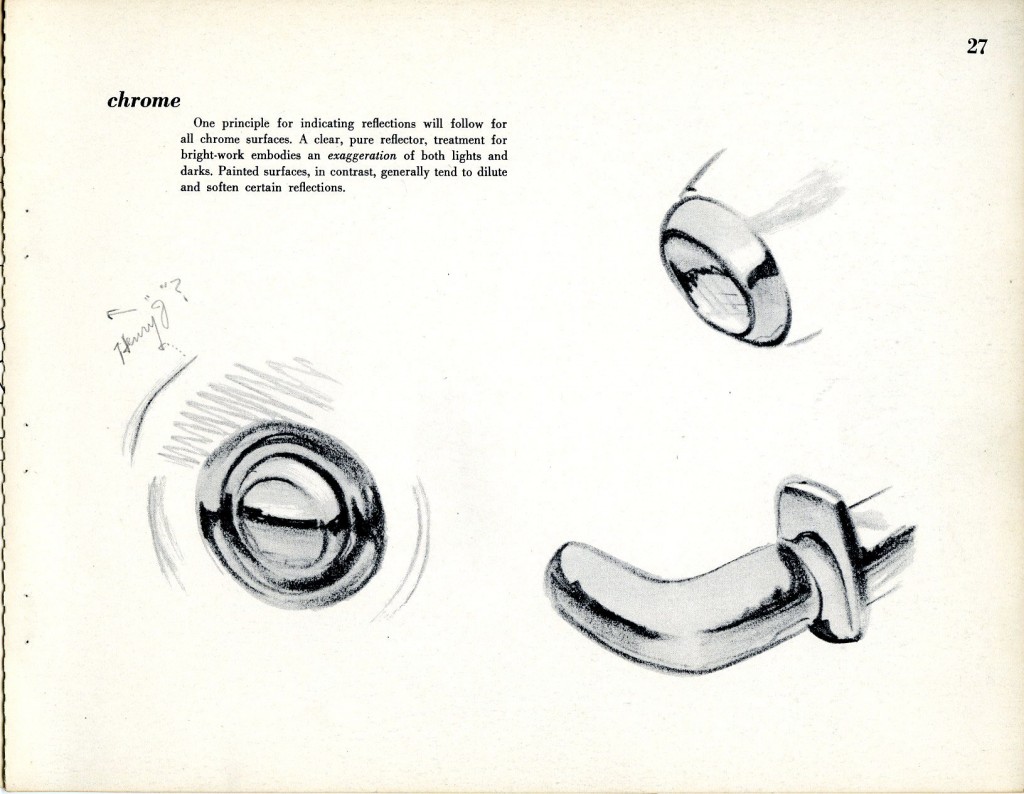

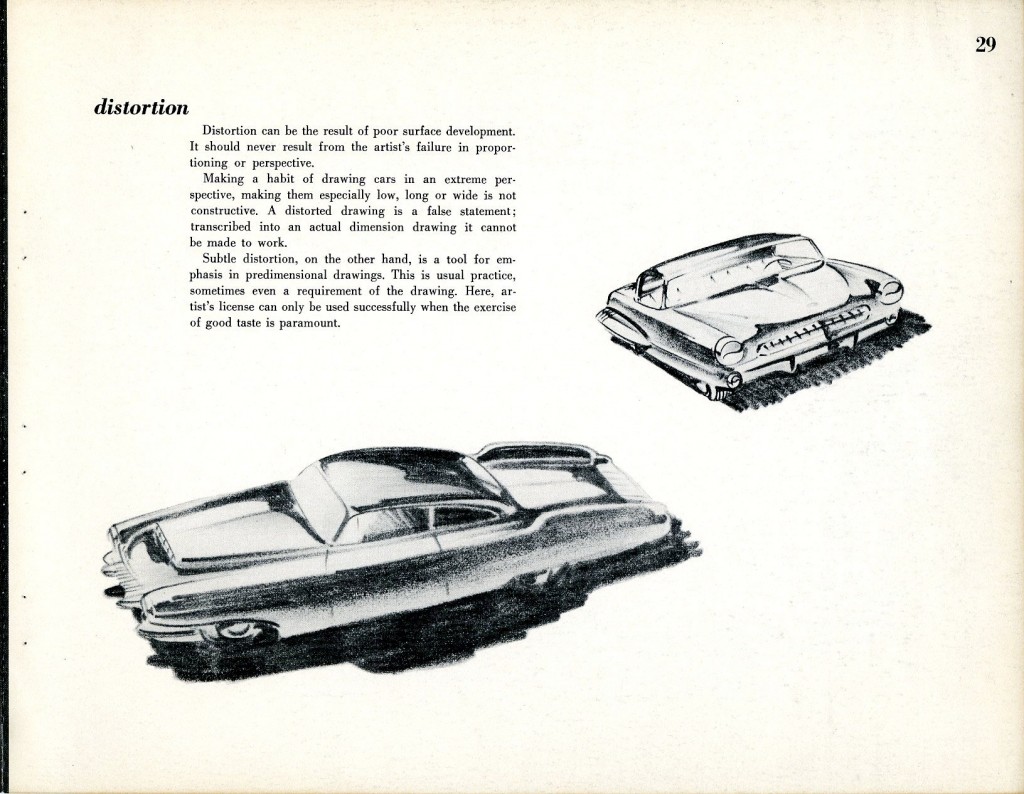
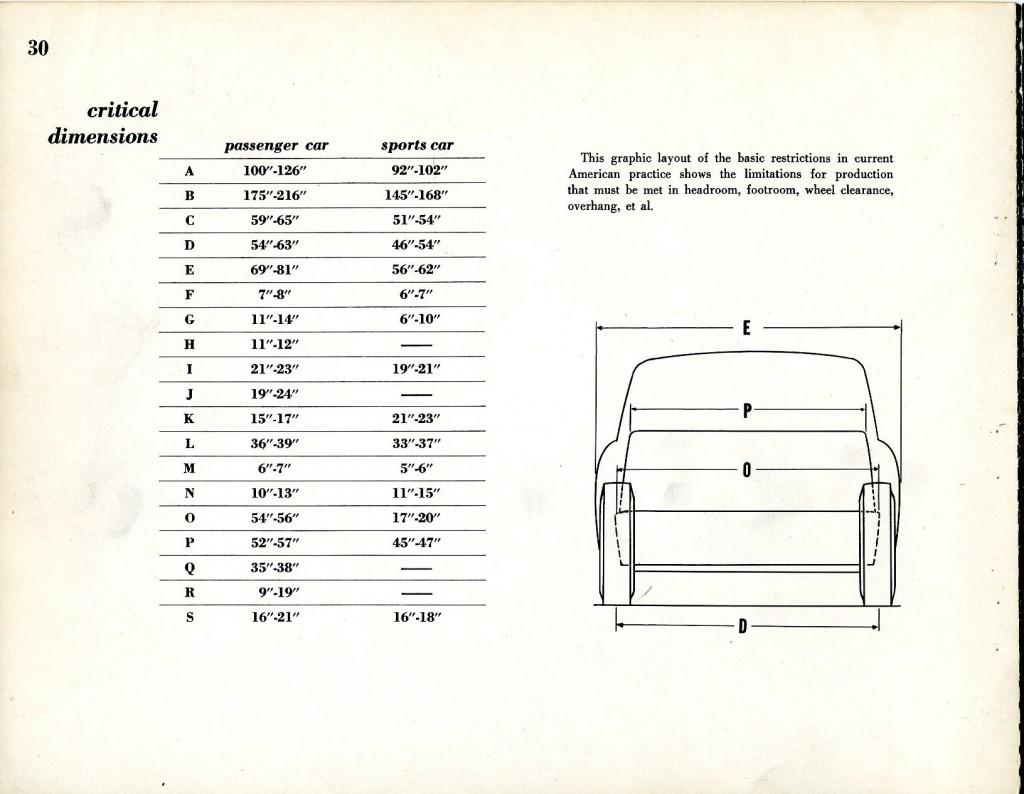
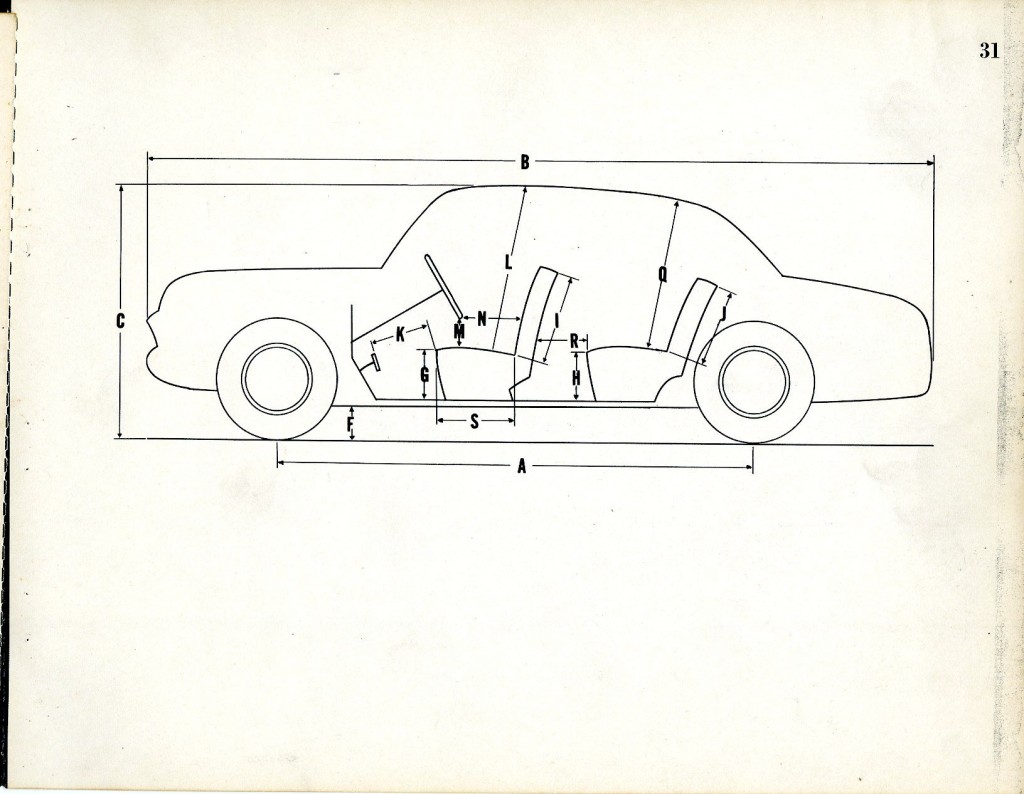

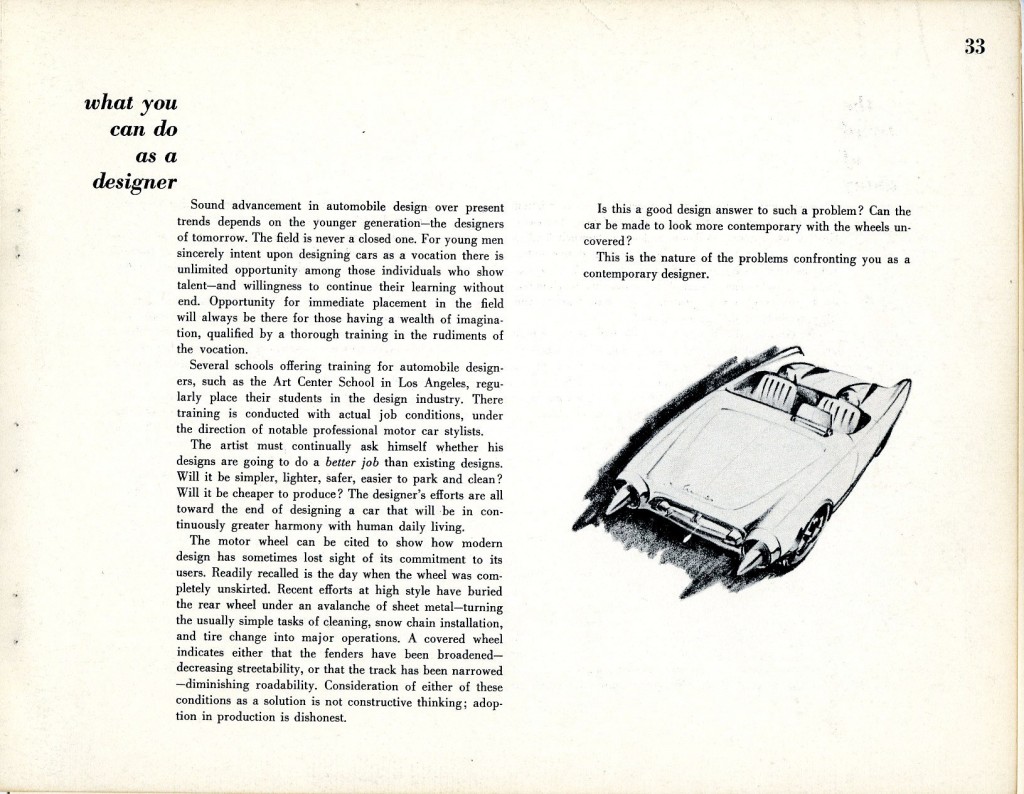
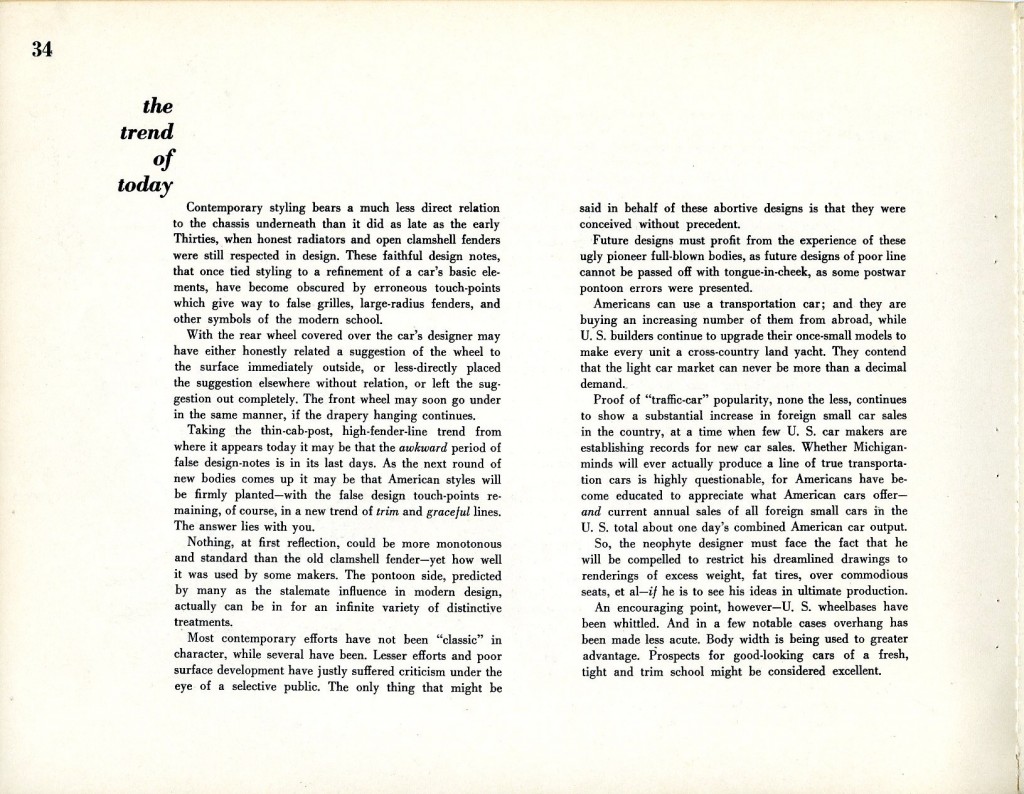
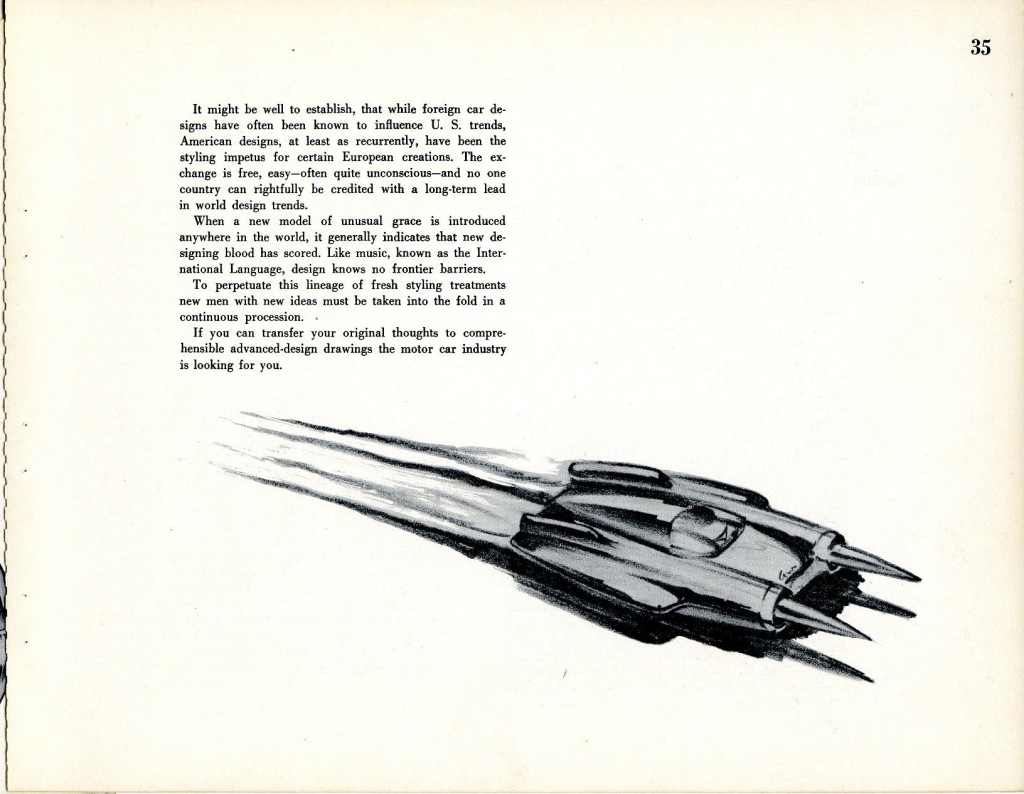
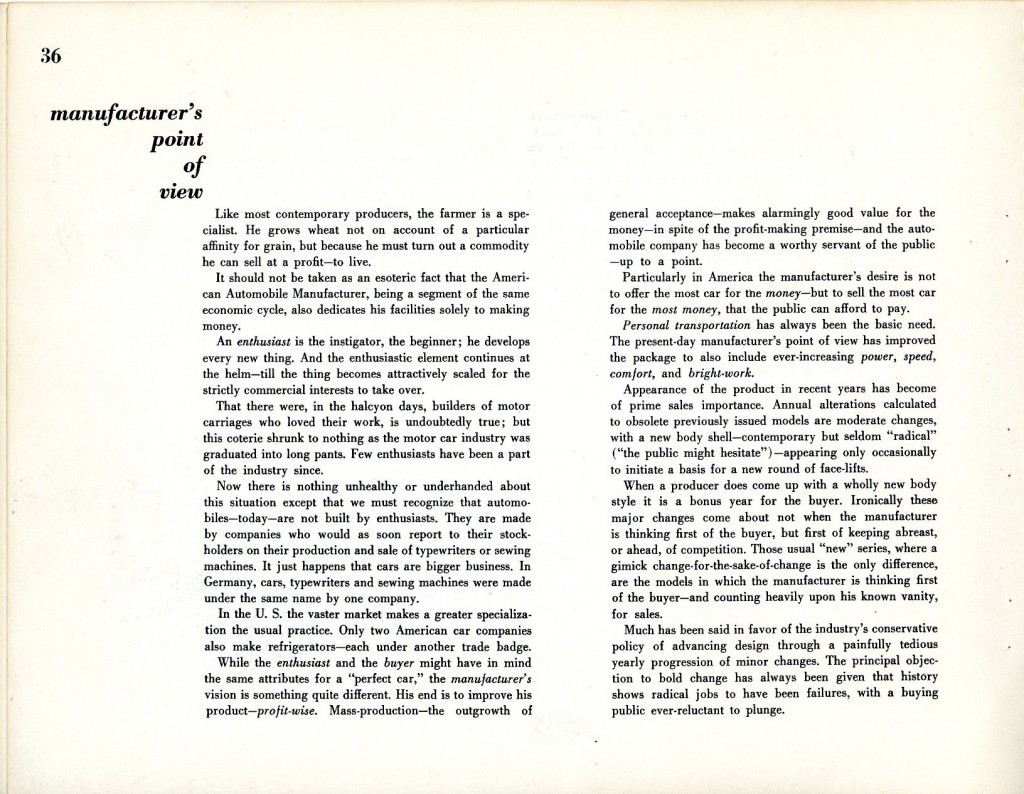
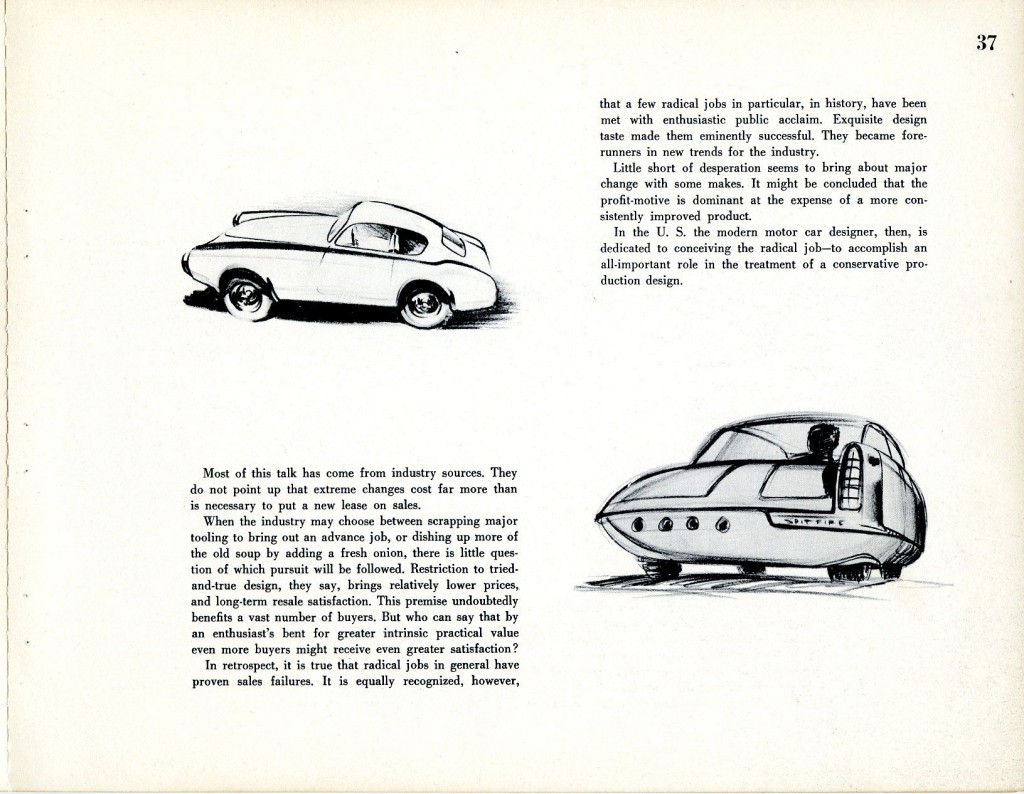
























My dad and “Bob” Gurr were friends from a young age. I was born in 1957 and I can remember looking through “How to Draw Cars of Tomorrow” as a 2 or 3 year old… and I recently saw an original copy of this book on a bookshelf in my dad’s office.
Bob also drew a chalk sketch of my dad’s blue ’36 Ford 5 window coupe which has adorned a wall in the house since I can remember!
Another artistic item from Mr. Gurr that is worth mentioning, is a folder of loose pencil sketches of wrecked 1930s and ’40s cars – some of them included some gore, as the drivers and passengers still occupied the vehicles…
These were off limits to me as a young child but, I peeked a few times!
My mom is passing these items on to me and I look forward to having my dad’s ’36, with Bob’s signature, adorning a wall in my home!
Geoffrey, This has to be one of the best postings that I have seen in a long time. Gurr was probably one of the most outstanding car illustrators in the 50’s. He was an innovative designer that had some real class when it came to making eye pleasing cars. He drew the cars that people wanted to be seen in.
I grew up in the 50’s in Flint Michigan and participated in one of the GM car design programs. Where you had to create a car and make it out of clay. Not sure what ever happened to the clay car. My mother probably threw it out when I went into the military along with all the comics and bubble gum cards that I collected. What they would be worth now.
When I came over from Germany in 1951 as a 10 year old child, I saw a guy driving a Coffin Nose Cord and fell in Love. I told myself that when I was that guys age, I also would be driving something as impressive. I now have a barn full of odd ball stuff. john sbiegay
Many builders of fiberglass specials, in the 1950s, emphasized low profile and 50/50 weight distribution (by placing the engine as far aft as possible), thereby sacrificing cockpit space. Some builders of small stature constructed the cars to fit themselves, with no consideration for larger occupants. Anyone purchasing or rebuilding a vintage fiberglass special would be well-advised to make use of the the guidlines in Bob Gurr’s book (which Geoff has provided, above) or similar dimension chart.
Merrill Powell
Mr. Gurr, is truly gifted and has a wonderful command of light and perspective, not to mention an incredibly keen eye for good design. I recently purchased the book “Walt Disney’s Imagineering Legend’s” and of course there is a segment on Bob Gurr…
The book is worth the time and trouble, for anyone interested in design not just automotive related, as clearly the Disney book covers much more, and of course if your a Disney fan at all, you will enjoy that aspect as well.
Would be great to see a documentary film done on Mr. Gurr’s life’s work, as it is indeed vast.
In the very early drawing classes at Art Center we worked with black,white and gray shades. We made class note books with drawings like Bob’s block and cylinder to express form. Most fine artists do charcoal sketches before starting on colour oil paintings. This is about the same thing. Sometimes we might have used one colored pencil [blue or green] to learn shading of 2D artwork.